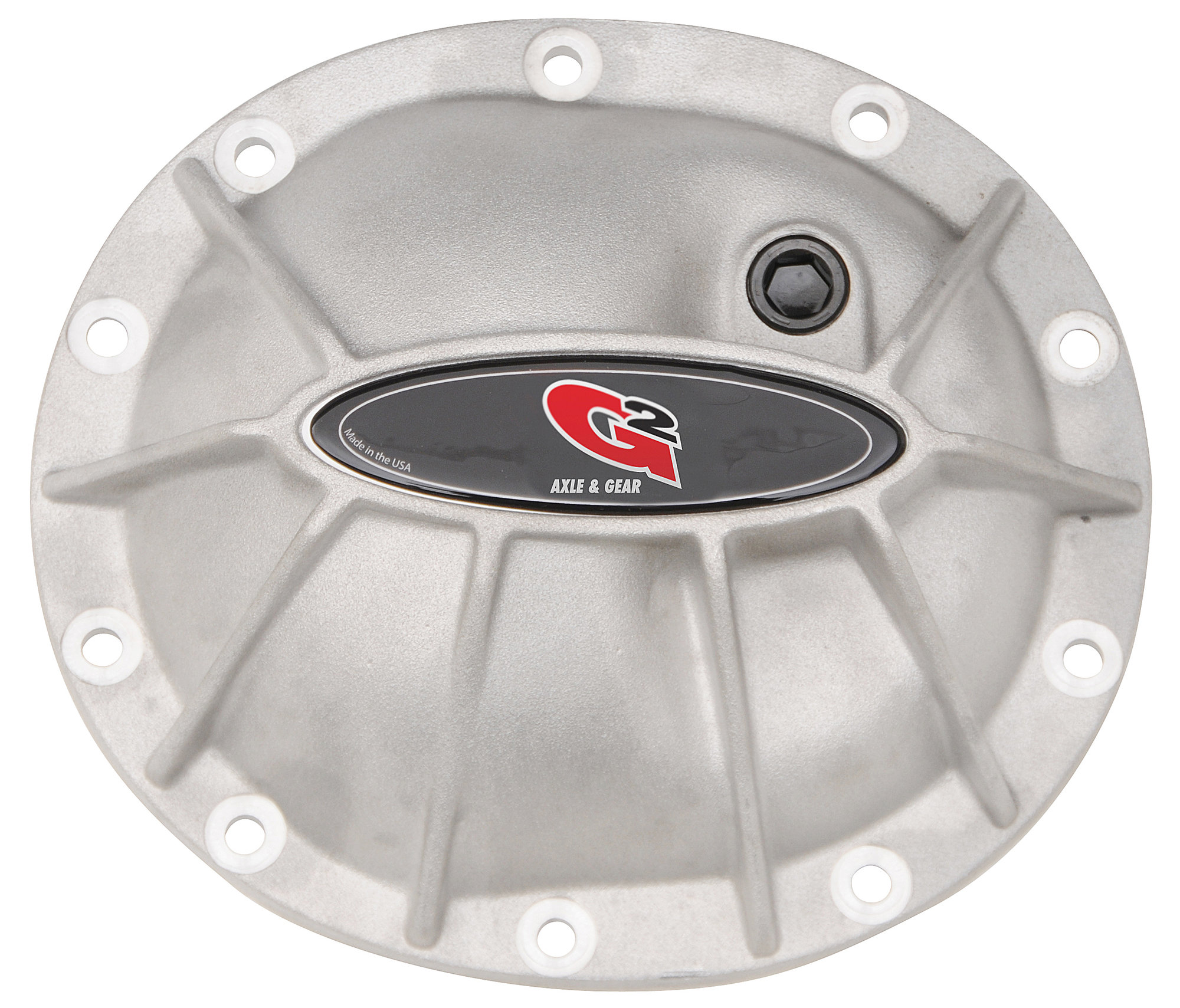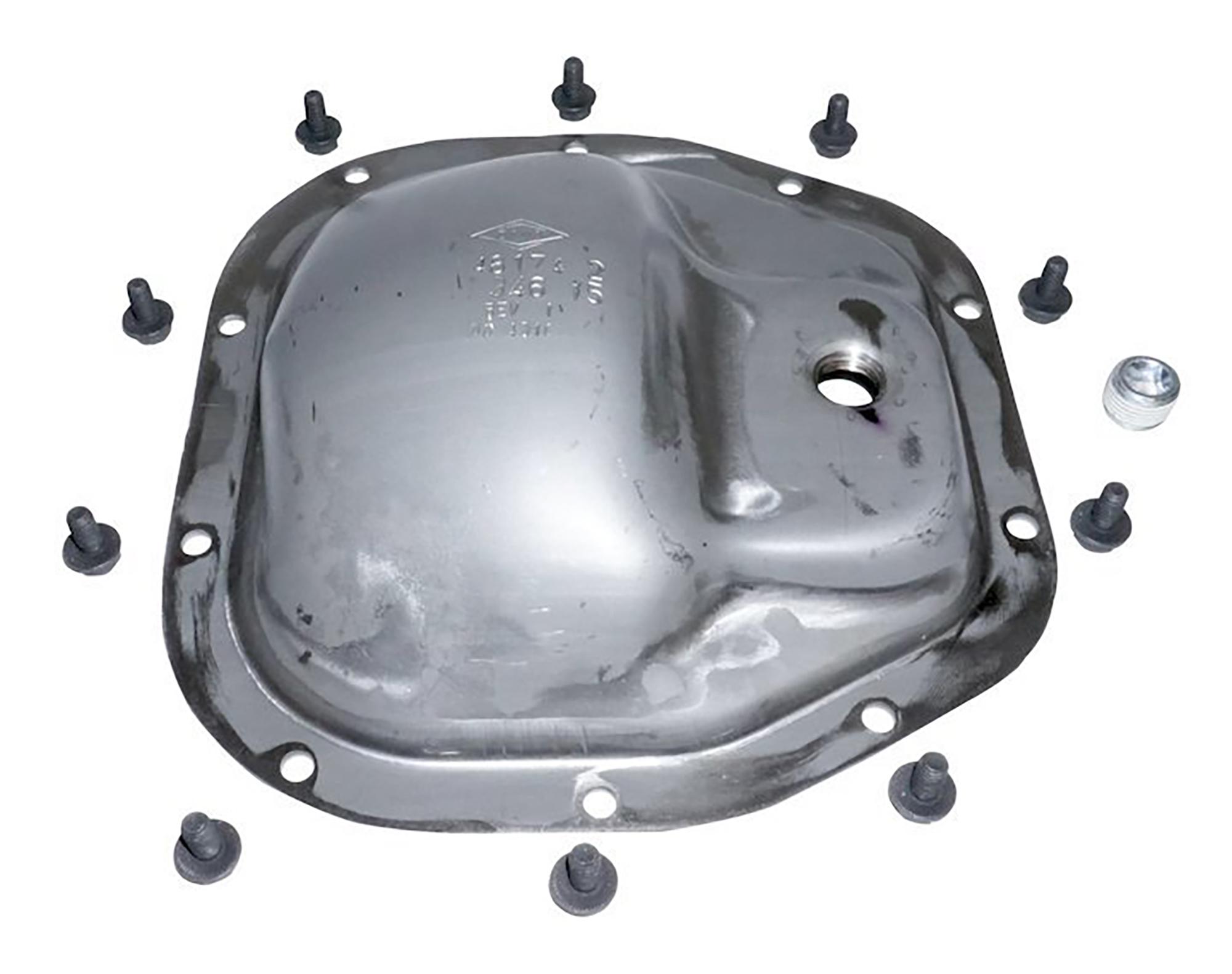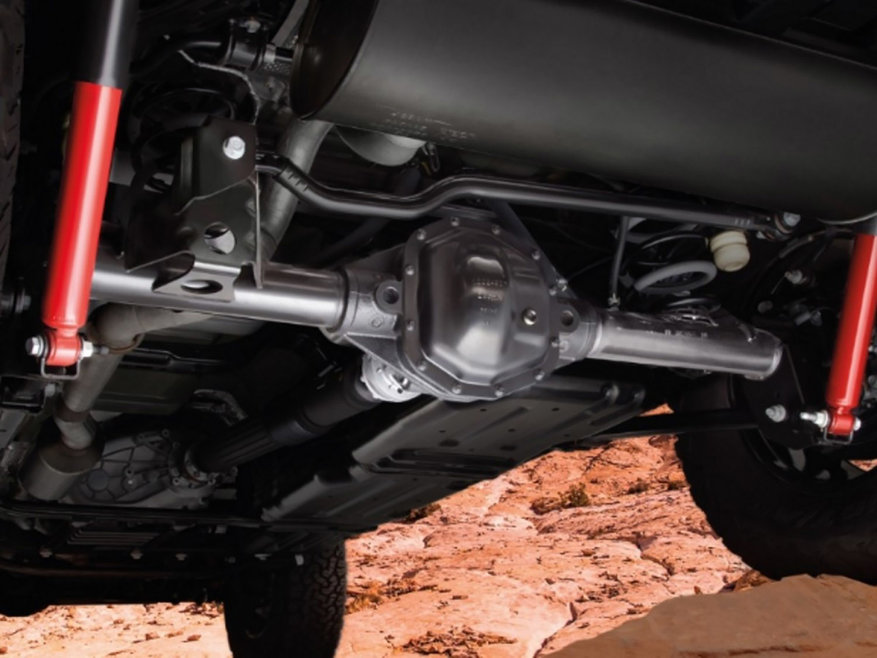by Devyn Schulte
Torque Correspondent
The Jeep Wrangler is a famously customizable vehicle and can come from the factory with several different axle combinations – mostly depending on the vehicle’s trim level. Plus, because of this customization, many do not even have the same axles as they did leaving the factory. So for those who have owned their Jeeps for a long time, or anyone who may have just bought a used Wrangler, identifying which axles the vehicle has isn’t as simple as looking at a spec sheet.
Since the first edition Wrangler YJ in 1987, to the brand new JL, Jeep has featured three main varieties of solid axles produced by the Dana Holding Corporation – the Dana 30, 35 and 44. And there is a very high chance your Wrangler will have some combination of these three.

Dana 30 is the most common front axle found under the vast majority of Jeep Wranglers, and this one is easily recognizable by a differential cover with flat sides, as well as its round top and bottom. This axle was also only ever put in the front of Jeep Wrangler vehicles, so don’t waste your time checking out the rear to determine that version, as it won't be a Dana 30.

Conversely, the Dana 35 is only found as a rear axle for the Jeep Wrangler. This axle version can be identified through its oval-shaped differential cover that is wider than its height.

Lastly, Dana’s 44 axle can be found under the front or rear end. And the differential cover on this one will not change from front to rear; consisting of flat sides and an angular top and bottom. The Dana 44 is also normally what comes factory on the Rubicon Wrangler trim level, however many choose this axle as a stronger upgrade for when they move to larger wheels and tires.
Additionally, Dana also makes a 60 series axle that some in the Jeep community use for serious off road performance because of its strength and ability to hold up to the stress of larger tires and wheels (think 38-40” or higher). This is normally a huge selling feature and those purchasing a used Jeep with this axle usually know what they are getting. But just in case, these Dana 60 axles should have the model number stamped somewhere on the bottom right of the center section. It also has a substantially large center section to accommodate larger gearing - not to mention you'll have very large tires on the vehicle.
If you’ve tried to identify your axles by shape or vehicle year, and are still unsure, then another way is to pull the axle’s Bill of Material number – located on the long tube of the axle shaft. This number is six digits followed by one or two digits at the end of the tube. With that number, you can check on Dana’s website to identify which axle you may have.
As far as stock breakdowns go, those who are original owners of a Jeep YJ (1987-95 build years) will have a Dana 30 in the front and Dana 35 rear, as Jeep only had one factory combination in those years.
Following the introduction of the Wrangler TJ (1998-2006), original owners still have a Dana 30 up front and will most likely have a Dana 35 rear as well. But Jeep did have a Dana 44 rear axle option for those driving a manual transmission. In 2003, Jeep introduced the Rubicon trim level for the TJ Wrangler and included a Dana 44 front and rear axle. Finally, those original LJ Unlimited owners (2003-06) have a Dana 30 front and Dana 44 rear.
Moving on to the JK Wrangler edition (2007-18), original owners have front Dana 30 axles except for those with a Rubicon trim level as these, again, are front and rear Dana 44s. Some who own very early production two-door model JKs will have a Dana 35 rear axle, but Jeep quickly switched production to Dana 44 rear axles. All four-door JK Wrangler original owners do have Dana 44s under the rear end.
Currently, if you have purchased the new JL Wrangler, you have Dana 30 front and Dana 35 rear axles, unless you specifically bought one with upgraded Dana 44s. All Rubicon JL owners have a Dana 44 front and rear axle. However, these aren't your father's Dana 30, 35, 44 axles though as Dana has made these stronger and lighter than any other generation. So much so that these are not interchangeable with earlier generation axles. For more information on these axles, as well as other JL Wrangler changes, check out our JL Wrangler showcase page.
Also, if you are the vehicle’s original owner, and want to verify exactly what you have, you can easily get your Jeep’s build specifications by entering your vehicle identification number on Jeep’s website.
For the majority of people, that Dana 30/35 (44) combination is fine for everyday driving and some lighter off-road activity. However, when you begin upgrading components on the Jeep (read, adding extra weight) then also upgrading axles definitely makes sense - especially if those upgrades include wheels and tires that are larger and wider.
While there is no real hard and fast rule that says ‘if you do ‘a’ then you must do ‘b’, many YJ and TJ owners do swap out the factory axles for Dana 44 front and rears when moving to 33- or 35-inch tires. This is also true for those JK owners bumping up past 35-inch tires. Because the alternative is to have those heavier tires, over time, begin bending those factory axles. Which isn’t fun for anyone.





















